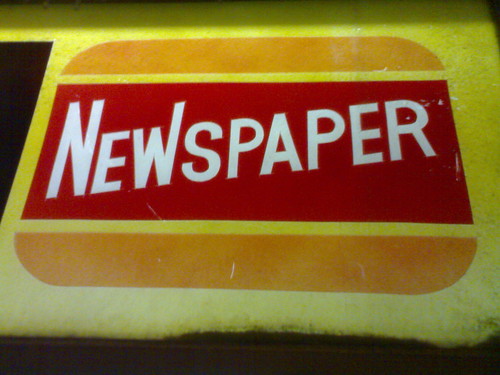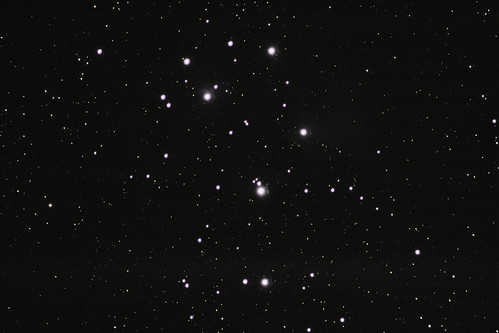In the Category interesting
Turkers power Amazon Remembers
Posted December 3rd, 2008 at 11:42 am. There are 0 comments.Amazon released their iPhone app, Amazon Mobile, and it includes a feature called Amazon Remembers where you can take a photo of any item in the real world, and it is uploaded to Amazon where they match the item in your photo with items from Amazon or their affiliates, and then let you know once they do. The “amazing” part of this is the use of Amazon’s Mechanical Turk program to analyze and offer suggestions for the photos.
I fully expect some interestingness to come out of this.
newspaper burger
Posted December 1st, 2008 at 10:26 pm. There are 0 comments.Someone favorited this photo this evening thouroughly making my day, a full 18 months after I took the photo. I’m happy that I got to see it again and did fully laugh out loud (LOL)
British Design Classics
Posted November 30th, 2008 at 7:51 pm. There are 0 comments.Great Stamps from the Royal Mail. The British Design Classics collection come out in early 2009.
via British Design Classics « Thinking for a Living™
Screens in the New York Times Magazine
Posted November 24th, 2008 at 1:28 am. There are 0 comments.
The NY Times Magazine this weekend is a special issue focusing on Screens. This fall issue is usually reserved for news from and about Hollywood and about movies and filmaking. This years issue involves all types of screen, mostly digital and the special concerns that come along with the proliferation of screens.Three good stories linked below and there are more NY Times Magazine Screens Issue
Kevin Kelly writes Becoming Screen Literate
Everywhere we look, we see screens. The other day I watched clips from a movie as I pumped gas into my car. The other night I saw a movie on the backseat of a plane. We will watch anywhere. Screens playing video pop up in the most unexpected places — like A.T.M. machines and supermarket checkout lines and tiny phones; some movie fans watch entire films in between calls. These ever-present screens have created an audience for very short moving pictures, as brief as three minutes, while cheap digital creation tools have empowered a new generation of filmmakers, who are rapidly filling up those screens. We are headed toward screen ubiquity.
Current Mad Men discuss all these screens, marketing, advertising and cross media communication. The last line of the quote below is the big takeaway.
Bastholm: Trevor Edwards, Nike’s main marketing guy, had a great quote. He said, “Nike’s not in the business of keeping media companies alive, we’re in the business of connecting with consumers.” That sums up digital pretty nicely.
Rasmussen: Clients are not saying, “Make us ads” or “Make us Web sites,” they’re saying, “Create interaction between our brand and our customers.” That’s our job now.
Clive Thompson writes in, If You Liked This, You’re Sure to Love That , the story behind the Netflix price and recommendation engines. Psychological hunches modeled with mathematics.
THE “NAPOLEON DYNAMITE” problem is driving Len Bertoni crazy. Bertoni is a 51-year-old “semiretired” computer scientist who lives an hour outside Pittsburgh. In the spring of 2007, his sister-in-law e-mailed him an intriguing bit of news: Netflix, the Web-based DVD-rental company, was holding a contest to try to improve Cinematch, its “recommendation engine.” The prize: $1 million.
powerlines
Posted November 12th, 2008 at 10:52 am. There are 0 comments.M45 – The Pleiades
Posted November 10th, 2008 at 11:01 am. There are 0 comments.Above a picture of the sky and stars submitted to the astronomy.net group on flickr. Astrometry.net will analyze the photo and return the below interesting information about the sky you have photographed. Seriously amazing pattern matching.
astrometry.net says:
Hello, this is the blind astrometry solver. Your results are:
(RA, Dec) center:(56.7751, 24.1559) degrees(RA, Dec) center (H:M:S, D:M:S):(03:47:6.024, +24:09:21.240)
Orientation:95.02 deg E of NPixel scale:1.96 arcsec/pixel
Parity:Reverse (“Left-handed”)
Field size :2.12 x 1.41 degreesYour field contains:
The star Celaeno (16Tau)
The star Electra (17Tau)
The star 18Tau
The star Taygeta (19Tau)
The star Sterope I (21Tau)
The star Merope (23Tau)
The star ηTau
The star Atlas (27Tau)
The star Pleione (28Tau)
NGC 1432 / Maia nebula
NGC 1435 / Merope nebula—–
If you would like to have other images solved, please submit them to the astrometry group.
Astrometry.net describes their project like this:
If you have astronomical imaging of the sky with celestial coordinates you do not know—or do not trust—then Astrometry.net is for you. Input an image and we’ll give you back astrometric calibration meta-data, plus lists of known objects falling inside the field of view.
The intersection of photography, data and crowdsourcing, with either the photography or the data or both will be an interesting space to watch.
Quote by 1:1 | design mind
Posted November 8th, 2008 at 1:07 pm. There are 0 comments.The mechanics of digital gaming – from overarching narrative to technical execution – are about managing player point-of-view within the environment of the game. But as video games map ever more closely to the built world, this point-of-view needs to be managed externally, as well. We must examine how gaming can be used to impact the world beyond the screen, both economically and intellectually.
Frontpages of the world
Posted November 6th, 2008 at 5:47 pm. There are 0 comments.
All images are sourced from the Newseum on November 4 2008.
News sites on the web got ongoing screenshot treatment at Electioneering08
Large Version of the above image 2MB
danger danger
Posted November 4th, 2008 at 6:40 pm. There are 0 comments.
The Association of Equipment Manufacturers has an online pictorial database. I see it as an illustrated guide to 130 ways you can get hurt, killed or worse by evil machines.
This database was developed to assist designers and technical illustrators in communicating effective safety messages through the use of consistent “industry-recognized” pictorial representations. Development of the database is guided by industry professionals and will be expanded as more product and process-specific pictorials are identified.
Available as .eps or .dxf files. Or grab a large version of the index I created above.
How do you feel
Posted November 4th, 2008 at 2:08 pm. There are 0 comments.The New York Times has this fine animated visualization of the one word answers of how they feel this election day.
See also twistori for emotions from twitter and wefeelfine for the same in the world of blogs.
[ iamtheweather powered by Wordpress And is definitely Not Plastic Bag ]









